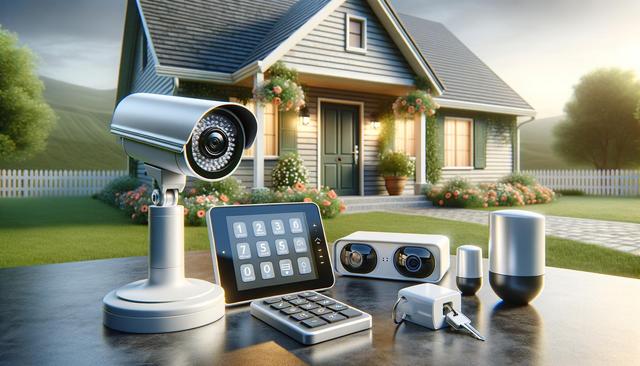
Securing Your Home: A Closer Look at Modern Home Security Systems
Understanding the Basics of Home Security Systems
Home security systems are designed to detect, deter, and respond to unauthorized entry, environmental hazards, or emergencies. A standard system typically includes a combination of sensors, alarms, control panels, and sometimes surveillance cameras. These components work together to monitor the premises and alert homeowners or security professionals when suspicious activity is detected. While traditional systems relied on landline connections and manual arming, modern solutions integrate wireless technology and smart features to offer more flexibility and control.
Today’s systems often come with mobile apps, allowing homeowners to monitor their property remotely. This functionality is especially useful for travelers or those who are frequently away from home. Additionally, many systems are now compatible with voice assistants and other smart home devices, streamlining control and enhancing the overall security ecosystem. The ability to receive real-time notifications, watch live camera feeds, and control settings from a smartphone adds a new level of convenience and responsiveness.
Key Components and Features to Look For
When evaluating home security systems, several features contribute to their effectiveness and ease of use. Understanding these components can help homeowners make informed decisions based on their specific needs and home layout. Some of the most important elements include:
- Motion Sensors: Detect movement in designated areas, triggering alerts or alarms.
- Window and Door Sensors: Alert when entry points are opened or breached.
- Security Cameras: Provide visual monitoring and evidence in case of incidents.
- Alarm Sirens: Deter intruders and alert neighbors or passersby.
- Control Panel or Hub: Centralizes system controls and integrates with other smart devices.
Additional features such as two-way audio, facial recognition, and automatic lighting control can further enhance a system’s effectiveness. It’s also essential to consider backup power options and cellular connectivity to ensure functionality during power outages or internet disruptions.
Professional Monitoring vs. Self-Monitoring
Homeowners can choose between professionally monitored systems or self-monitored setups depending on their preferences and budget. In a professionally monitored system, the security provider receives alerts and takes action, such as contacting emergency services if an alarm is triggered. This option offers continuous protection, even when the homeowner is unavailable or unable to respond.
Self-monitoring, on the other hand, places the responsibility on the homeowner to respond to alerts. While this can save monthly monitoring fees, it requires the homeowner to be vigilant and available to handle incidents. Some systems offer hybrid models, allowing users to switch between professional and self-monitoring as needed. The choice largely depends on lifestyle, risk tolerance, and desired level of involvement in the system’s day-to-day operation.
Benefits of Installing a Home Security System
Investing in a home security system offers numerous benefits beyond just deterring crime. For many homeowners, the psychological comfort and sense of control are equally valuable. Here are some of the most recognized advantages:
- Crime Deterrence: Visible systems and signage often discourage break-ins.
- Emergency Response: Quick alerts can lead to faster response from emergency services.
- Insurance Discounts: Many insurance providers offer reduced premiums for secured homes.
- Remote Access: Manage and monitor your home from virtually anywhere.
- Peace of Mind: Knowing your property is protected can reduce stress and improve well-being.
Moreover, modern systems can also detect environmental dangers like fire, carbon monoxide, or flooding. Integrating these sensors into the security platform provides comprehensive protection and can prevent serious damage or health risks.
Choosing the Right System for Your Home
Selecting the right home security system depends on several factors, including property size, location, budget, and personal preferences. Urban homes may prioritize video surveillance and smart locks, while rural properties might benefit more from motion detectors and perimeter alarms. Renters might lean towards portable DIY systems that don’t require permanent installation, while homeowners may opt for more integrated and hardwired solutions.
Important considerations when choosing a system include:
- Scalability: Can the system grow with your needs or changes in property size?
- Ease of Installation: Is it user-friendly or does it require professional setup?
- Customer Support: Reliable help can make a significant difference in system performance.
- Integration: Does it work well with your existing smart home devices?
- Cost: Consider both upfront and ongoing expenses such as monitoring fees.
Taking the time to research and compare different systems can help ensure that you select a solution that fits your lifestyle and provides long-term value.
Conclusion: Making Home Security a Priority
Home security systems are no longer just a luxury—they are a practical necessity for protecting your loved ones and your property. With a wide range of options available, from simple self-monitoring setups to fully integrated smart systems with professional oversight, there is a solution for virtually every type of household. By understanding the features, benefits, and considerations involved, homeowners can make informed decisions that enhance both safety and peace of mind. Prioritizing home security is a proactive step toward a more secure and confident way of living.


